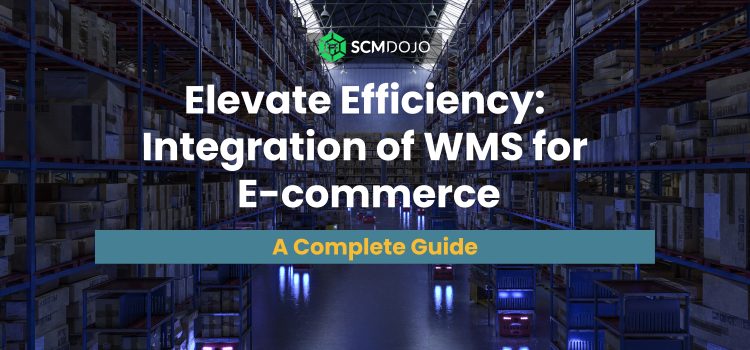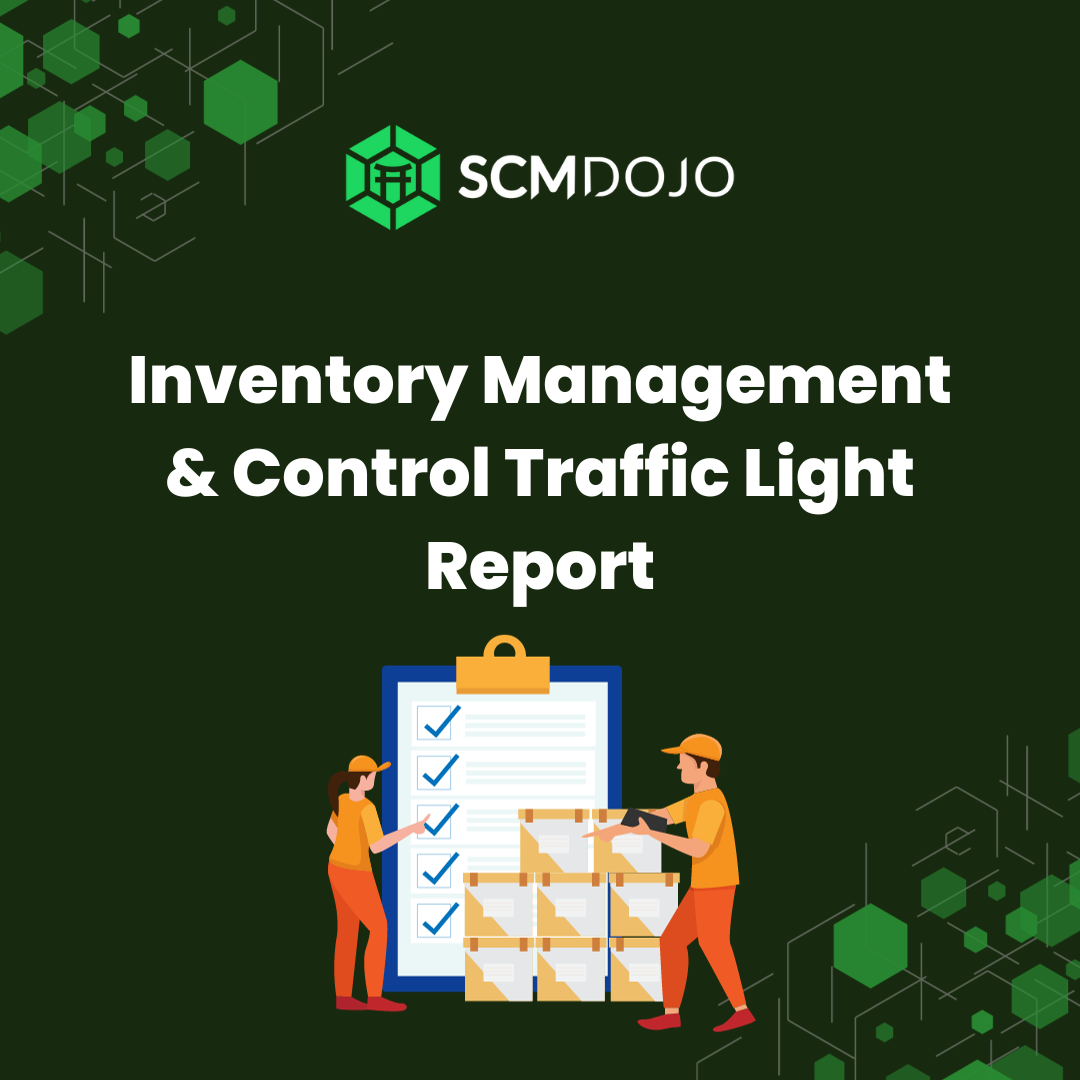A warehouse management system for e-commerce makes managing a giant warehouse 24/7 no easy task. Additionally, when you need to oversee a considerable number of Stock Keeping Units (SKUs), it is like a nightmare without an efficient tool. The WMS proves to be a great tool for managing the entire activities of a warehouse, effortlessly handling tasks ranging from inventory management, replenishments, receiving, put-away, picking, packing, and shipping, to tracking the logistics system.
WMS helps you improve productivity and profit through advanced software and technologies. Barcode systems, RFID labeling, hi-tech automated robots for pallet movement, ERP systems, transport management systems, logistics software, augmented and Virtual reality wearables, etc are some of the hi-tech features of WMS.
This article will walk you through the basic understanding of the warehouse management system (WMS), its features, how and where it fits with the supply chain, and different WMS systems. We will also discuss the benefits and the future of WMS.
Read more about Warehouse Automation: Definition, Benefits and Issues at our Website SCMDOJO
What is a Warehouse Management System (WMS)?
A warehouse management system is a software solution that provides transparency and visibility to the entire warehouse operations. WMS is efficient enough to manage Inventories, order fulfillment, and inbound-outbound deliveries of any single warehouse or multi-location warehouse cluster. It is highly efficient in manufacturing setup and retail industries as it can track every movement of materials.
An effective WMS can optimize your warehouse resources and allow you to maximize space utilization. WMS reduces huge human efforts by tracking the entire material movement on a real-time basis. These software solutions are such efficient that they can trace the exact time of order placement, the pick-pack time, the person involved, and where the product has been transported by which vehicle.
What are the Features of a Warehouse Management System?
While planning to go for a software solution for your warehouse, you must consider what features the tools are going to provide. Here are some essential features of a sound WM system.
Warehouse designing:
The efficiency of a warehouse operation is maximum when it is designed properly. Depending on the material flow, loading-unloading dock locations, number of materials to be handled, and many more parameters, WMS provides excellent design solutions to optimize the operations. It takes care of every minute detail of inventory management like storage location, pallet allocation, minimum travel path calculation, and many more.
Read more about Warehouse Layout Optimization for Efficient Inventory Management at our website SCMDOJO
Tracking of inventory:
Modern WMS can track every movement and reflect the status on a real-time basis. Advanced technologies like AR wearable gadgets, RFID systems, and barcoding ensure that every material has its location. You can get a clear picture of the invoicing data, packing size, space availability, etc.
Receiving and storing:
This includes receiving materials from suppliers, checking the purchase order, and putting away the materials at the correct location without any errors. Additionally, the inventory is updated on a real-time basis.
Pick Pack Ship:
The intelligent WMS analyses many parameters and provides solutions for the best way of picking the material from the shelf, packing procedure, and shipping information. This smart software can generate packing lists, invoices, and bills of lading with a single click and is capable of sending advance shipping notifications to clients.
Workforce management:
Hi-tech WMS helps the warehouse manager to run the show efficiently. It provides visibility on the resources and indicates human resources availability. Additionally, you can monitor their performances and set KPIs (Key Performance Indicators) for performance evaluation.
Reporting:
Reporting is a critical part of a warehouse. It consists of several pieces of information starting from the receipt, invoices, inbound and outbound deliveries, inventory status, and more. An innovative WMS can generate customized reports in no time.
Yard and dock management:
It assists the dock supervisor in getting a fair idea about available docks and reduces waiting time for the trucks. It is also helpful to manage cross-docking and other inbound-outbound deliveries.
Where Does a Warehouse Management System Fit into the Supply Chain?
A warehouse is the central part of any Supply Chain. It plays a significant role in running a smooth supply chain by receiving goods, storing them without any damage, timely issuing raw materials and components to the production shop floor, and delivering the correct finished products to the right person at the right time and right quantity.
The modern supply chain operates on visibility and transparency. The warehouse is responsible for providing the correct information on the inventory front, order fulfillment, invoicing, etc. The more efficiently the warehouse works, the more the organization can fulfill the customer’s requirements.
The warehouse profoundly impacts the revenue and business strategies driven by supply chain management. It plays a significant role in improving the SCM performance by
- Efficient storage
- Strategic location
- Security
- Inventory Accountability
- Fulfillment of orders and distribution
- Economic benefits
- Value-adding operations
What are the Types of Warehouse Management Systems?
We can categorize the warehouse management system into three major types:
Standalone WMS:
This is the traditional warehouse management system that most organizations use. It is deployed on the company’s premises, and its hardware system is used for this purpose. According to their business complexities, every organization can do a high level of customization on this standalone WMS. Though it is a costly option, you can have tighter control over the system. After the system development and implementation, it is the asset of the company, and they need to bear the cost of maintenance, expansion, and updates.
Cloud-based WMS:
With the introduction of cloud technology, the latest WMS has adopted this platform to provide seamless solutions. You can enjoy the benefit of horizontal implementation at a faster pace. This, in turn, reduces the cost of implementation. The auto-update facility keeps you away from the headache of regular hassle. This system can be scaled up with your business expansion without investing much. Moreover, as it operates through the cloud, your data is safe from any internal disaster.
SCM and ERP-based WMS:
Many software solutions provide an entire system to the organizations for every function. For example, Enterprise Resource Planning software like SAP and Oracle offers a package solution that includes all the functions as modules. They have a finance module, production planning, material management module, inventory management module, and warehouse management module as subparts. Therefore, such systems are capable of providing a holistic picture to the management and offer end-to-end transparency of the supply chain.
What are the Benefits of Warehouse Management Systems?
There are many benefits of having a robust WMS in place. This helps organizations improve their efficiency in every facet in the long run. We have listed some key advantages of a sound warehouse management system.
Improved operational efficiency:
The WMS is connected to many new advanced technologies, which helps streamline the processes and reduce errors significantly. Warehouse management software checks every step to avoid mistakes from the inbound receipt to the outbound deliveries. Moreover, with the help of automated tools, the warehouse team can handle larger volumes with less effort and paperwork.
Better inventory management:
An efficient warehouse management system indicates the correct inventory level and defines the min-max levels of items. Based on their usage and number of picks from the warehouse, WMS indicates the frequent, medium, and rarely used items that help in the correct material ordering. Moreover, the advanced warehouse management software is capable enough to identify excess and obsolete inventories. Learn more with our course at our website or Click here to learn more!
Improve labor Management:
To enhance the productivity of the resources, it can define workloads for the staff and optimize the in-warehouse movement path. Even it can indicate the labor requirement and create a schedule for them. Safety is today’s topmost priority, and advanced WMS points out the possible hazards within the space, ensuring the safety of man and machine.
Reduce cost:
Modern store management software calculates the minimum travel path of the materials to reach the assembly line or loading point. Additionally, it points out perfect pallet locations, shelves, and equipment locations to run the warehouse with the highest efficiency, which, in turn, saves you a lot of money.
Waste reduction:
Modern software is backed up by solid data. WMS automatically identifies and applies the First-in-First-out (FIFO), Last-in-First-out (LIFO), or Highest-in-First-out (HIFO) policy on the goods based on the strategy. In the case of perishable or shelf-life items, this smart system informs you well in advance which items are approaching their end life.
Boost customer satisfaction:
Top-notch warehouse management software can help boost your customer delight by improving order fulfillment, quicker deliveries, and fewer inaccuracies. If your WMS is integrated with any CRM software that provides a status update to the customer, it will improve your customer loyalty and brand reputation.
Enhance supplier relationship:
You need a close, transparent, and real-time information-sharing system with your suppliers to have a robust Supply Chain process. Your WMS can be integrated into the supplier’s system, bridging the gap and establishing a two-way information flow. It makes the process more flexible, and your suppliers enjoy a healthy business relationship.
Benefits of WMS for E-commerce
As the technology takes the entire industry towards the cloud infrastructure, the WMS also benefits from this. Advanced cloud-based warehouse management software solutions provide some fantastic benefits.
Fast Implementation:
Where the conventional system takes months to implement, the advanced cloud-based platforms can be implemented within weeks, depending on the complexities. For fast-paced organizations, quicker implementation provides minimum interruption to the running business and improves ROI and profit.
Fewer upgrade hassles:
The beauty of cloud management is the updates and modifications that take place on the cloud system itself. And the vendor takes responsibility for making necessary modifications and changes in the cloud server. It saves a lot of time and hassle for the customers. Moreover, it avoids costly customizations.
Lower upfront cost:
Cloud-based WMS is significant in terms of initial and running cost savings. This architecture neither requires any hardware or software installation nor any IT administrator to manage it. Additionally, the auto-updates, installation of the latest version, and modifications help you save a lot of time and money.
Scalability and flexibility:
As your business grows, you must also expand the IT systems and WMS. Cloud-based structures are great in terms of scalability. It can be scaled up quickly and handle more complex supply chain situations. Additionally, the flexibility of such a system provides a huge advantage to organizations in managing difficult situations.
Seamless integration:
You may be using different software solutions like ERP systems, Software for your accounting process, and likewise for your business. The advanced WMS cloud versions are easy to integrate with your other business software, and you can get an integrated IT solution for your needs.
What is the Future of Warehouse Management System?
With the increasing demand in e-commerce and other industries, there is no doubt that businesses need to deliver the products in the shortest period. WMS is going to solve the major issues of organizations by providing advanced solutions, and the future of this technology is very bright.
But how will the warehousing system reshare itself in the next couple of years? Let’s discuss that.
Introduction of robots:
To manage the mammoth materials inbound and outbound flow, it is evident that WMS needs automation. And the introduction of robots in managing warehouse operations is a must. This revolution has already started, and many companies are offering best-in-class robotic solutions in this area.
These robots are capable of moving materials to different designated places, loading and unloading materials from vehicles, accurately picking and shipping, etc. Cobots, which are collaborative robots, work with humans to enhance productivity. There are automated guided vehicles that reduce human errors significantly and provide a safer environment for the warehouse staff.
Drones for WMS:
Drones are primarily used in different events, corporate activities, and defense purposes. However, their high efficiency, speed, and uninterrupted flow can significantly improve the movement of the materials in the warehouses. Many organizations are experimenting with deliveries with drones. It will not be a surprise to see drones lifting materials from storage racks and issuing them to the shop floor or unloading raw materials from vehicles.
Using smart gadgets in WMS:
In the internet-everywhere environment, WMS can be accessed from anywhere, and you only need a smart device and internet connectivity. The advanced WMS can operate on any device and operating system. You can scan barcodes and RFID, access the warehouse management system, track inventory, invoice shipping notifications, and everything. This increases productivity and optimizes the manpower.
Augmented reality wearables:
These are smart gadgets packed with ultra-modern features like scanning, WMS access, auto-counting, and many more. These devices can help you identify the exact item code of the component and backtrack the order number, WBS element, and even the customer order number. These devices will remove the dependency on human memory and thus, reach the maximum accuracy level in the future.
Smart Automated vehicles and forklifts:
Due to its high buying and maintenance costs, you cannot find these in most organizations. Software programming enables these machines to operate automatically without any assistance. This will help organizations to reduce operational costs and increase efficiency drastically.
On-demand warehousing solution:
This is another prospect that will be a popular option in the future. It will offer flexibility to the organizations to manage pick situations demands. The additional capacity of the rented warehouse on an as-on-when-required basis will help businesses spend less on costs.
Big data and machine learning:
Big data and ML are not new terms but the latest introduction to the warehouse management system. For large organizations, it is vital to analyze all the data points related to warehousing and populate them with decision-making templates. Warehouse stores a massive amount of data; therefore, in the future, Machine Learning and Big data analytics will become routine.
Conclusion:
Currently, the business processes are getting highly complex. There are several factors like changes in customer demand and expectations, challenges in the lead time, higher competition in the market, and more like these. To mitigate the ever-changing requirements and stay ahead of your competitors, you must operate your warehouse efficiently. A warehouse management system can do it for you.
If you are planning to set up your warehouse, it’s the correct time to introduce an integrated WMS. It is an investment to increase productivity and take your warehouse operations to the next level.
About the Author – Koushik Majee
A writer by passion, A Mechanical Engineer by education, and a Supply Chain expert by profession, Koushik loves writing about industry trends. He is an eager learner about the nitty-gritty of the supply chain market. An old fellow in pen and paper, Koushik likes to craft complex issues in a simple, comprehensive way. With extensive professional experience spanning more than 15 years, he manages business work on the one hand and lives his passion for writing on the other. When not resolving the complex issues of the Supply Chain, he can be found making toys and artifacts. Home alone, Koushik loves to play his guitar or make DIY machines for his little angel.
Visit his profile at LinkedIn for Contact!
Recommended Reading

How to Integrate WMS to My Business
This practical guide explains what is Warehouse Management System (WMS) is, the benefits of a WMS, and Why you should consider a WMS for your operation.
This guide aims to describe the present use, application, and characteristics of selecting various inventory planning methods and to explain how the methods are applied by supply chain professionals.










